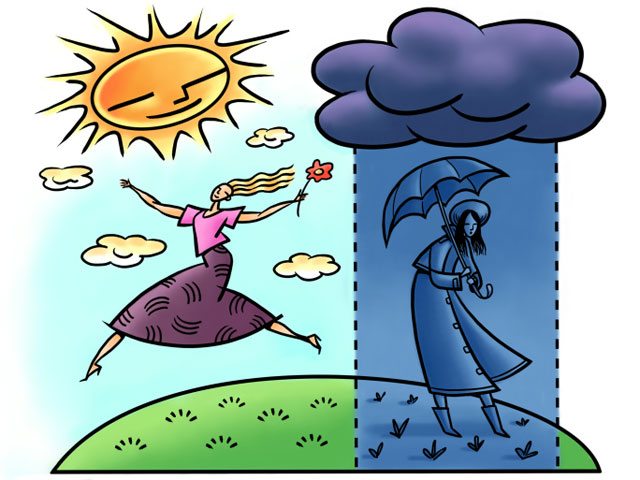Building New Habits to Hack Operant Conditioning
by Alison Yoho | Thursday, Mar 17, 2022
Seasonal Affective Disorder, a form of depression otherwise known as SAD, is characterized by changes in moods similar to depression during winter months as a result of less sunlight. SAD usually begins and ends at about the same time every year, peaking in January and February. I am originally from Minnesota, where I have lived my whole life before I moved to Jupiter to attend the Honors College. Winters in the upper midwest are long, cloudy, and cold. Temperatures can be below zero degrees for days on end that make it nearly impossible to incorporate fresh air or sunlight. How might one cope with these conditions? Through personal experience, I have found the answer to be developing healthy habits and a consistent routine to look forward to every day. Plus, when you can hack psychology and apply principles of learning and operant conditioning, you can easily train yourself to make these small, healthy habits permanent, no matter the season.
Understanding the principles of operant conditioning is the first step to building a new, long-lasting habit. In operant conditioning, organisms associate their own actions with consequences. Operant conditioning requires a reinforcement or punishment, which then determines the probability of an event being repeated. A reinforcer will strengthen preceding behavior, while punishment will repress said behavior. How can this be applied to building healthy habits, whether to cope with SAD or to just feel better in general?
An example of a healthy habit that has helped me cope with SAD is running. Knowledge of operant conditioning and reinforcement can help make a habit like this permanent. To make running less prone to extinction, or fading away, you could apply the idea of a reinforcement schedule. A reinforcement schedule is a pattern that dictates how often reinforcement will be applied to the habit you are trying to build. For example, if running is originally something you dread, you could apply a continuous reinforcement schedule. This will reward the response every time said response occurs. To build a running schedule, you may initially decide to enjoy sushi, your favorite food, after the completion of each run. Eventually, after some successful runs, it may be wise to apply a partial reinforcement schedule. Now, you would be applying a reward (reinforcement) only part of the time. The drawback – this will cause a slower acquisition of the habit at hand. However, in the long run, your habit will have much greater resistance to extinction and therefore become permanent. Only having sushi after a handful of runs could help you to create a healthy running habit.
Another set of healthy habits that have helped me include reading books and journaling. The key to these habits is to turn them into a routine. How do you incorporate journaling every morning into your routine? According to operant conditioning, a behavior that produces a positive consequence is more likely to be repeated than the same behavior followed by negative consequences. In my life, a healthy morning routine is key for a positive day. For me, that looks like writing down three things I am grateful for as soon as I wake up, rather than grabbing my phone and immediately checking texts, emails, and scrolling through social media. Similarly, before I go to sleep I make it a point to set my phone down and pick up a book and try to read instead, even if it is just a few pages. The goal with these habits, although they may be small, is to produce positive consequences in my life. I notice that even though my phone may be addictive, the less time I spend mindlessly scrolling, the more positive I feel. Taking this time at the start and end of each day produces the positive consequence of feeling better, hence I am more likely to repeat it.
Now, how can this knowledge of how we learn and build habits be applied going forward? My advice is to be mindful of what habits you have that make you feel better in the long run. While scrolling on my phone is easy at the moment, journaling helps me feel better and alleviates SAD symptoms in the long run. Laying in bed all day is easier than running, but running produces positive consequences in my life that lounging around does not. Thinking about positive consequences or implementing positive consequences to help build healthy habits and routines can help you feel better, during winter or any time, and lead to a healthy and happy life.
Work Sourced
“Seasonal Affective Disorder (SAD).” Mayo Clinic, Mayo Foundation for Medical Education and Research, 14 Dec. 2021, https://www.mayoclinic.org/diseases-conditions/seasonal-affective-disorder/symptoms-causes/syc-20364651.